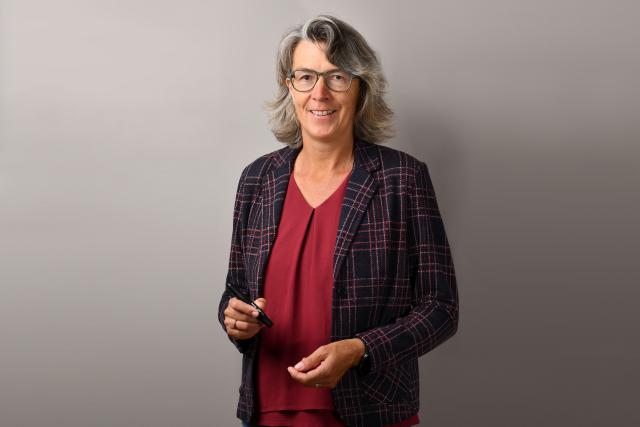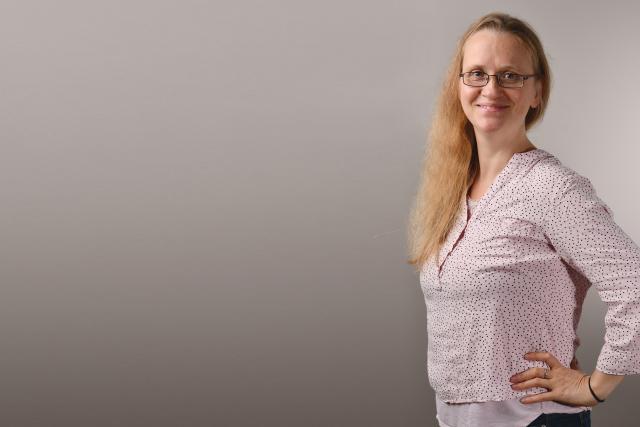

How stereotypes influence application processes
Around a third of all inquiries to the Federal Anti-Discrimination Agency concern discrimination at work. The federal agency in Berlin deals with discrimination against women, for example because they are paid less than their male colleagues or experience professional difficulties due to pregnancy or parental leave. “Discriminatory behavior occurs when men are preferred over women when hiring police officers, simply because they are considered physically stronger,” explains Professor Melanie Steffens.
Discrimination may often occur in application processes, for example when people with non-German-sounding names are not even invited to a job interview. “Unequal treatment of people because of group membership is called discrimination,” explains Melanie Steffens. Such group memberships can include, besides gender, sexual orientation, age, physical disability, or a migrant background.
Very divers: discrimination in everyday life
Overall, we encounter discrimination in everyday life in very different ways. Sometimes it happens unconsciously, for example in the socialization of children, explains Claudia Niedlich: “As a girl, you are almost automatically taught that you should be well-behaved and prefer pink dresses. Boys, on the other hand, wear pants, are allowed to be cheeky and to be rough. Those are the common stereotypes.” Melanie Steffens adds: “Discrimination can also appear harmless. For example, when a girl of Turkish origin is praised in math class for correctly answering an easy problem.” The teacher may mean well, but the girl concludes from the recognition for a simple task that little is expected of her.
What is perceived as discrimination has changed over time, the two researchers add. Just a few decades ago, wives had to ask their husbands for permission if they wanted to work. And women were not allowed to become bus drivers with the reasoning that they needed to go to the toilet too often. Today, one can hardly believe this, but back then it was hardly questioned.
Discrimination as a means of power
Why do we discriminate? “For those who discriminate, discrimination means to secure their power and maintain a certain system, a hierarchy,” explains Melanie Steffens. Those who discriminate sometimes even feel disadvantaged themselves when they fear losing that power: “Men who see a women’s quota as a disadvantage often forget that they themselves were long given preferential treatment when it came to career planning.” Another example is the debate about wearing headscarves in schools: religious symbols of minorities are often critically questioned, while Christian crosses were hardly discussed for decades.
Stereotypes make decisions easier
“Gender roles also provide orientation in a complex world,” Melanie Steffens continues: “A certain path can thereby be predetermined.” When it comes to choosing a career, many things are supposedly easier if certain professions are not even considered: “For example, when boys rule out certain career paths, such as becoming a preschool teacher, from the outset.”
So, does discrimination also have a benefit? It provides quick orientation especially when decisions need to be made under time pressure, Melanie Steffens says: “In our social world, both well-thought-through and quick decisions are necessary.”
An example: A female student is walking home alone in the evening after a party. She has two routes to choose from: a shorter one through the park, where a group of young men in leather jackets are standing, and a longer one around the park. Would she choose the shorter route? Probably not. Would she hesitate just as much if she saw a group of elderly men playing chess in the park? Probably not. This example shows how naturally we use stereotypes in everyday life. They help us assess situations but can also lead to sweeping judgments.
Discrimination at work
But back to the world of work: Melanie Steffens and Claudia Niedlich investigate whether and how discrimination takes place in working life: “Whether people are disadvantaged in an application process because of their gender, ethnicity or sexual orientation,” outlines Claudia Niedlich. The legal framework is provided by the General Equal Treatment Act (AGG). It was introduced to reduce or eliminate discrimination in working life. The law prohibits discrimination based on ethnic origin, gender, religion or belief, disability, age or sexual identity. Those affected can take legal action to enforce their rights. “But the law alone is not enough to dissolve stereotypes and prejudice in people's minds,” says Claudia Niedlich.
Eye tracking the selection process
To better understand how discrimination can be reduced, the research group used eye tracking in a project funded by the German Research Foundation (DFG). Test subjects wore special glasses in the central psychology laboratory in Landau, that made it possible to track what they were focusing on while reading. The study participants were asked to make decisions in a fictitious application process. The applicants in this process were either lesbian, gay, or heterosexual. In addition, they applied for either a job considered typically male or typically female.
The researchers found: If a heterosexual man applied for a job as a pilot, his application was only looked at briefly. “The test subject probably thinks, well, of course he can do that,” explains Claudia Niedlich. However, if a gay man applied for the same pilot position, his application was examined much more closely. His qualifications were checked more thoroughly. “Ultimately, the gay man was thus disadvantaged. As a result, he was more often considered unsuitable, despite having the same qualifications.”
Prejudice is sometimes hidden
Do all people openly show their prejudice, or do some try to hide them? In studies, many participants indeed try to appear fair, report Niedlich and Steffens. However, this inhibition is weaker when it comes to judging virtual people. In a research project in collaboration with the German Research Center for Artificial Intelligence (DFKI), virtual people were created who took part in a fictional application process. One important question was the salary offered by participants. The result: toward virtual people, discrimination is more likely and behavior that could be considered discriminatory is less concealed. In the study, heterosexual women and gay men were offered lower salaries than heterosexual men and lesbians.
Showing courage – addressing discrimination
How will research in this area continue? Another question currently being investigated by the research group in a DFG project is whether sexism as a form of discrimination is perceived as less serious than racism and other forms of discrimination. And how can discrimination be avoided in one's own actions? Steffens and Niedlich emphasize that being honest with yourself and questioning your own stereotypes is a first step. If you witness discrimination—or are affected by it yourself—it is important to show courage and address the behavior openly.


Want to learn more about the topic?
Browse through the following scientific publications:
Steffens, M. C., & Roth, J. (2017). Diversity-Kompetenz in Bezug auf Gender: Sozialpsychologisches Wissen über Geschlechterstereotype und Geschlechterrollen In P. Genkova & T. Ringeisen (Eds.), Handbuch Diversity-Kompetenz (pp. 273-283). Springer. DOI: 10.1007/978-3-658-08932-0_22-1
>> VIEW PAPER
Steffens, M. C., Niedlich, C., & Ehrke, F. (2016). Discrimination at work on the basis of sexual orientation: Subjective experience, experimental evidence, and interventions In T. Köllen (Ed.), Sexual orientation and transgender issues in organizations. Global perspectives on LGBT workforce diversity (pp. 367-388). Springer. DOI: 10.1007/978-3-319-29623-4_22
>> VIEW ARTICLE
Steffens, M. C., & Ebert, I. D. (2016). Frauen – Männer – Karrieren. Eine sozialpsychologische Perspektive auf Frauen in männlich geprägten Arbeitskontexten. Springer.

Diese Themen könnten dich auch interessieren:

